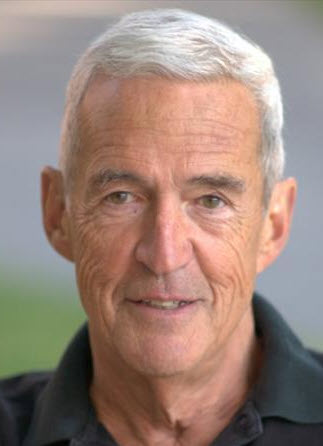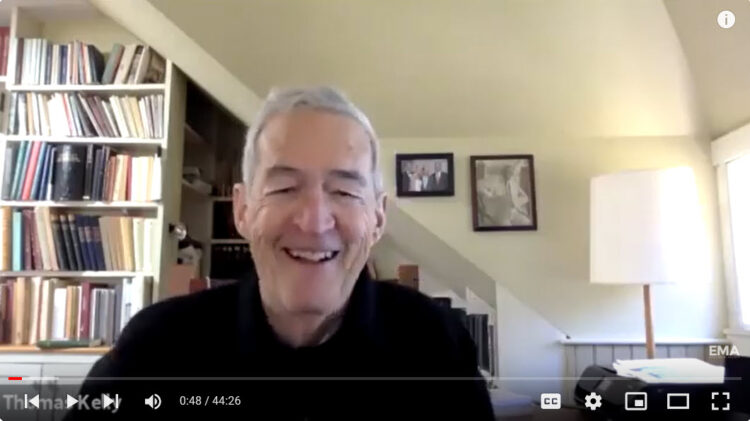MUSINGS: We Are Now the Grown-Ups
This article first appeared in the January, 2024 issue of EMAg
During the dark days of the pandemic I, like many teachers, discovered the joys and heartbreaks of online learning. I was then teaching a couple of courses at the Juilliard School. You know, or you can imagine, how difficult it is to give, say, a voice lesson when teacher and student are separated by distance, by a tiny but distracting sound-lag, and by very poor audio quality. People did heroic work.

Fortunately for me, I was teaching “classroom” courses, so the hands-on and ears-on problems of lessons were not so serious. And there is the advantage that people all over the world can meet and converse in real time.
One of my courses, for students in Juilliard’s Master’s program in historical performance, dealt with the history of the early-music “movement.” In the past we’ve discussed the usual ideas: 19th-century revivals of Bach, Palestrina, etc.; the early 20th-century pioneers (Cape, Dolmetsch, Landowska); the greats of the ’60s and ’70s (Greenberg, Harnoncourt, Leonhart, and then Hogwood, Norrington, Gardiner); and so on. And there’s more, of course: instruments, editions, recordings, the list goes on.
But because we were not together to discuss these things, I came up with an idea of which I’m rather proud. Given my age (please don’t ask), I know a lot of people who have been involved with early music for 50 years and more, and I managed to turn Zoom to our advantage in a series of interviews with some very cooperative, and very distinguished, senior practitioners of historical performance.
For each performer, we did a two-part event: First I recorded a Zoom conversation, which the students watched on their own time; and then, during our class period, the artist zoomed into the class, and engaged in a live discussion with the students. It was a star-studded semester; in a few cases, as we were beginning to resume in-person classes, some of the guests (Hoppy Smith, Lisa Crawford) were willing and able actually to come to the classroom for the discussion part.
A second series, undertaken at the request of the students, was with distinguished teachers of early music in colleges and universities. I won’t name all the guests here, but they all generously agreed to let their talks with me be archived by Early Music America, and the full videos can be consulted under the topic heading Trailblazers in Historical Performance, on the EMA website.

Some distinguished artists that I did not interview inquired delicately about why they were not included — the biggest reasons being a lack of time and our focus on North America. One or two people had ignored my invitation or did not want to take part. But mostly everybody wanted to be heard.
Each of these people is a friend, and I thought I knew them well. But to hear their various stories and learn of their attitudes and experiences was revelatory. Here are a few things I think you could take away from the series:
• There was an attitude in “early music” (not yet HP) akin to the tie-dyed, Vietnam-era, hippie counter-cultural atmosphere: We are doing this ourselves, independent of the establishment and the authorities. There was a base of amateur music-making, starting with recorders and viols and harpsichord, and moving onward from there, growing from the roots up.
• People were figuring things out for themselves (instruments, treatises, experimentation) since there wasn’t much in the way of teachers, conservatories or similar institutions.
• Numbers were small. The same group of people — some called it the Amtrak Symphony — played most of the Baroque orchestra gigs anywhere on the East Coast and farther afield. Perhaps this created a sort of uniform North American style.
• Things have gotten much better: Instruments are better, the players know how to work them, styles are better understood, and performance standards have improved immeasurably since those experimental days.
• The modern historical-performance movement now has a history. We have ancestors, family trees, traditions: A=415, performance habits, a standard repertory of Baroque favorites, a cult of virtuosity. And don’t forget the persistent lack of attention paid to medieval or Renaissance repertoire.
• You can now go to study at a number of distinguished programs; Indiana, Oberlin, Juilliard, the Schola Cantorum Basiliensis, and elsewhere.
Does this all mean that the old counterculture has become the new establishment? Have people started worrying that they sound like their parents? No more Hey kids, let’s put on a show? Maybe HP is all grown up. Is that a good thing?
Thomas Forrest Kelly is Morton B. Knafel Professor of Music at Harvard. He previously directed early-music programs at Wellesley, the Five Colleges, and Oberlin. He is past president and long-time board member of Early Music America. He is the author, most recently, of Capturing Music: The Story of Notation (W.W. Norton).

